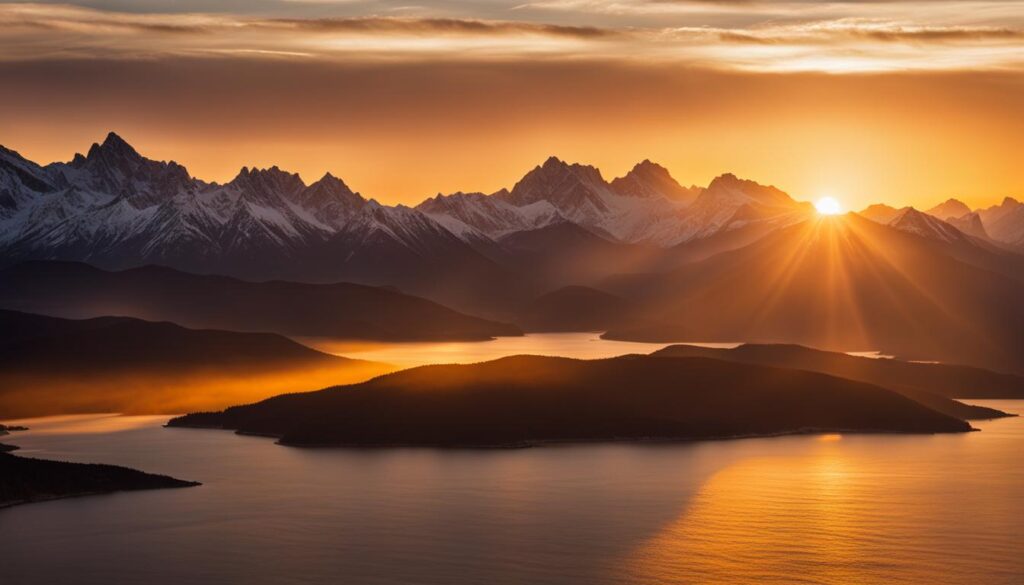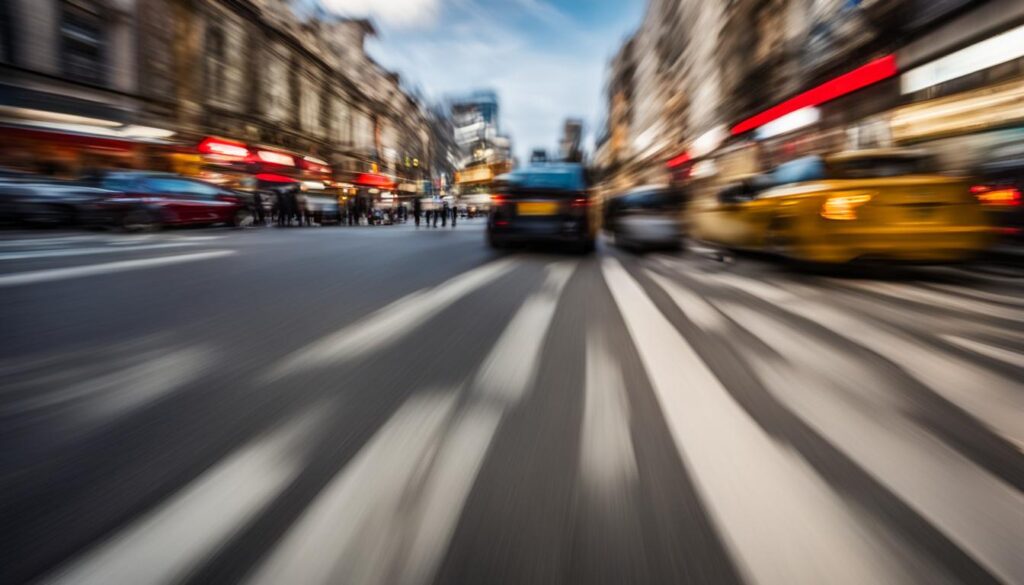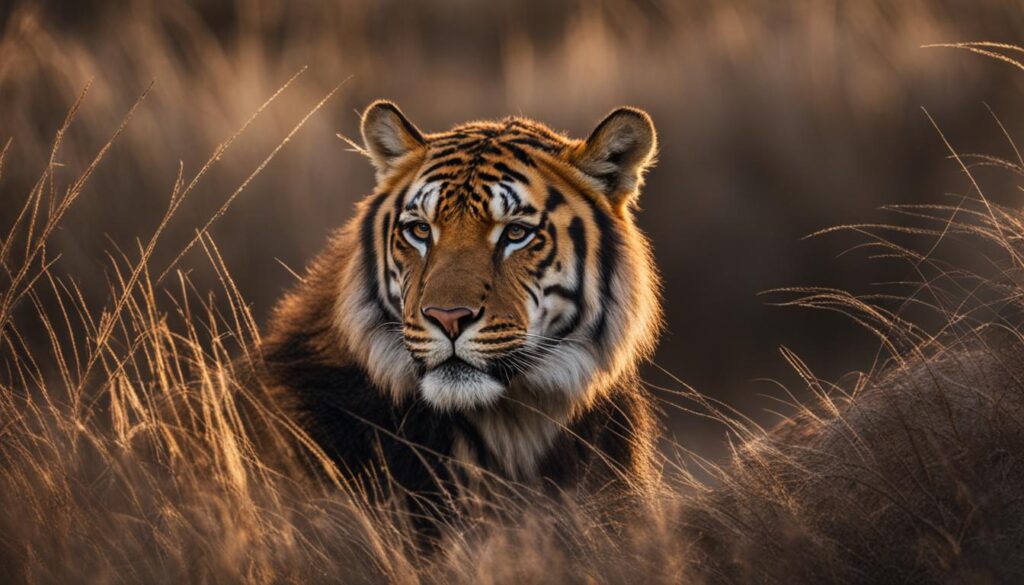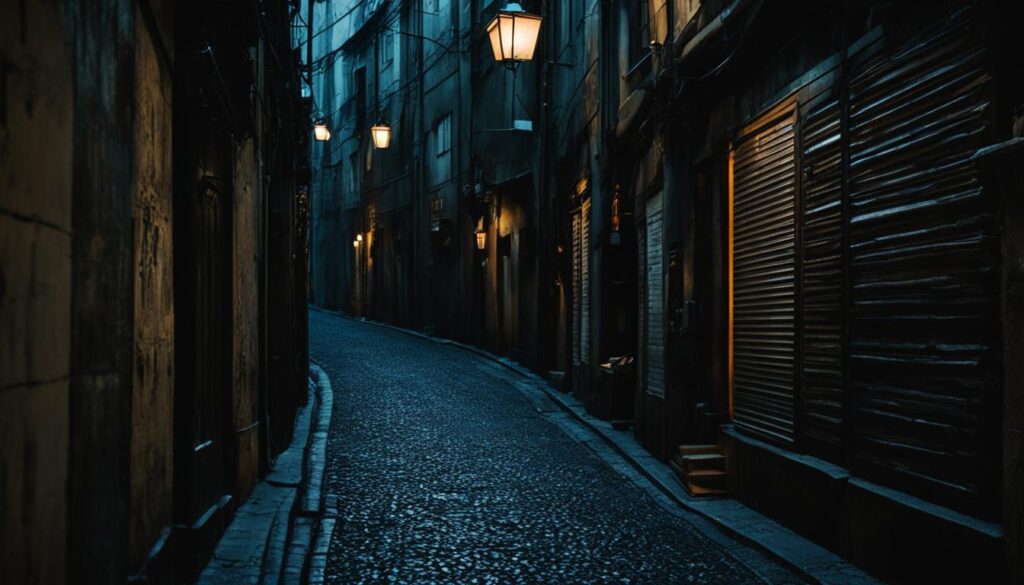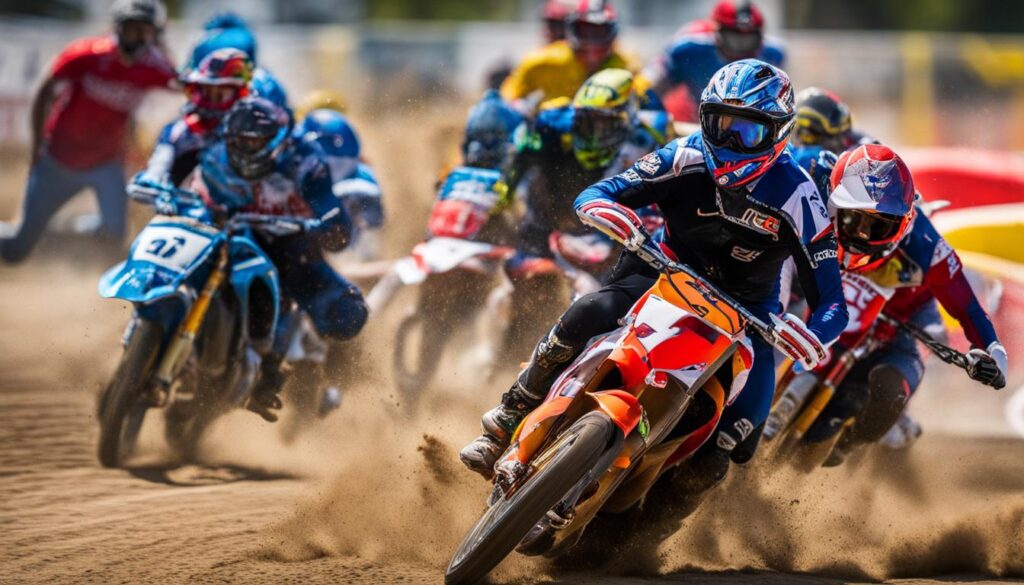Are you planning a trip and wondering what are the best camera settings for different travel photography situations? With so many different environments and lighting conditions to contend with, it can be challenging to know which settings to use to capture the perfect shot. But don’t worry, we’ve got you covered.
In this section, we will share our top recommendations for optimizing your camera settings to capture amazing images during your travels. Whether you’re shooting landscapes, wildlife, or indoor environments, these travel photography camera settings will help you capture stunning photographs that you’ll treasure for years to come.
Before we dive into the specific camera settings for different travel photography situations, let’s briefly discuss what camera settings are and why they matter. Camera settings determine how your camera captures and processes an image, including factors like shutter speed, aperture, ISO, and white balance. By adjusting these settings, you can achieve a wide range of creative effects and optimize your photos for different environments and lighting conditions.
Camera Settings for Landscape Photography
When it comes to landscape photography, the camera settings you choose can make a significant difference in the outcome of your photos. Here are some recommended settings to capture stunning landscapes during your travels:
| Setting | Recommended Value |
|---|---|
| Aperture | Between f/8 to f/16 |
| ISO | Lowest possible value (usually 100 or 200) |
| Shutter Speed | Varies based on lighting conditions; use a tripod for slower shutter speeds |
| Focus | Manual focus for optimal sharpness |
| White Balance | Auto or custom white balance to match lighting conditions |
Keep in mind that lighting can greatly affect the look of your landscape photos. During golden hour, the hour after sunrise and before sunset, you can capture breathtaking shots with warm tones and soft light. Midday sunlight can create harsh shadows, while overcast days can produce a softer, more diffused light.
With the right camera settings and lighting conditions, you can capture stunning landscapes that truly convey the beauty of your travels.
Camera Settings for Street Photography
Street photography allows you to capture the essence of a destination through candid moments and vibrant street scenes. To capture stunning street photography images during your travels, you need to know the best camera settings to use.
The first step to achieving great street photography is to set your camera to aperture priority mode. This mode allows you to control the aperture, which determines the depth of field in your photo. For street photography, you generally want a shallow depth of field to blur the background and focus on your subject.
An aperture of f/4 or wider is ideal for a blurred background and shallow depth of field. Additionally, a lower aperture setting allows more light into your camera, which is ideal for low-light situations often encountered during street photography.
When it comes to shutter speed, you should set it to at least 1/125th of a second to freeze fast-moving subjects in your frame. Of course, you may need to adjust the shutter speed depending on the environment and lighting conditions present.
Keep your ISO as low as possible to minimize noise in your photos. An ISO of 800 or lower is recommended.
Finally, consider using a wide-angle lens which provides a broader perspective of the environment and can lend a sense of drama to your images.
Camera Settings for Wildlife Photography
Wildlife encounters can be unforgettable experiences while traveling that you would definitely want to capture. To take sharp and detailed images of wildlife, you need to adjust your camera settings based on the situation to ensure that you don’t miss any action. Here are some recommended camera settings for different wildlife photography situations:
| Scenario | Recommended Camera Settings |
|---|---|
| In natural light | Use a fast shutter speed (1/500 sec or faster) to freeze any movement. Set your aperture to a value of f/5.6 or lower to ensure a shallow depth of field. |
| In low light | Use a higher ISO to compensate for the lack of light. Use a slower shutter speed along with a steady hand or tripod to avoid blurry shots. Set your aperture to a value of f/5.6 or lower for sharp images. |
| For birds in flight | Use a fast shutter speed (1/1000 sec or faster) to freeze movement. Set your aperture to a value of f/5.6 or lower to ensure a shallow depth of field and a higher ISO for better performance in low light. |
Remember, wildlife photography requires patience, timing, and the right camera settings that vary according to the situation. So, experiment with different settings and see which works the best for each unique wildlife encounter you encounter.
Camera Settings for Low Light Photography
One of the biggest challenges in travel photography is capturing stunning images in low light conditions. When the sun sets, the lighting conditions change, and the camera settings need to be adjusted accordingly. Here are some tips for optimizing your camera settings for low light photography during your travels:
Adjust the Aperture
In low light situations, it’s best to use a wide aperture (small f-number) to let as much light into the camera as possible. This will help you capture sharp and detailed images of your low light scenes, and create beautiful bokeh effects in your background. However, using a wide aperture can also result in a shallow depth of field, which means that only your main subject will be in focus. If you want to capture the entire scene, you may need to use a narrower aperture (higher f-number).
Slow Down the Shutter Speed
To capture enough light in low light conditions, you may need to slow down your shutter speed. This will allow your camera’s sensor to absorb more light, resulting in brighter images. However, a slower shutter speed can also increase the risk of camera shake or blur. To avoid this, use a tripod or a stable surface to keep your camera steady, or increase your ISO to allow for a faster shutter speed.
Increase Your ISO
Increasing your camera’s ISO setting will make the image sensor more sensitive to light, allowing you to capture brighter images in low light conditions. However, using a high ISO can also result in more noise or grain in your images. To avoid this, try to keep your ISO as low as possible while still achieving the desired exposure.
Use Manual Focus
When shooting in low light conditions, your camera’s autofocus system may struggle to find the correct focus point. To avoid this, switch to manual focus mode and adjust the focus yourself. Use your camera’s focus peaking or magnification features to ensure that your subject is in sharp focus.
By adjusting your camera settings for low light photography during your travels, you can capture beautiful and atmospheric images that truly reflect the unique character of your destination.
Camera Settings for Action and Sports Photography
If you’re looking to capture dynamic shots during action-packed moments or sports events on your travels, it’s important to know the right camera settings. Action and sports photography requires you to freeze fast-moving subjects to capture them sharply and accurately.
Shutter speed is the most crucial setting for action and sports photography. Use a fast shutter speed to freeze motion and capture sharp photos. A minimum of 1/500th second is recommended, but you may need to go higher depending on the speed of the subject.
Aperture should also be considered for sports photography. A wider aperture (lower f-stop number) will allow for a faster shutter speed, but it will also decrease the depth of field, making it difficult to keep all subjects in focus. A smaller aperture (higher f-stop number) will increase the depth of field, ensuring all subjects are in focus, but will require a slower shutter speed.
ISO settings should be adjusted as needed to achieve the desired exposure. A higher ISO setting will allow for faster shutter speeds, but may introduce grain or noise into your photos. It’s recommended to keep the ISO as low as possible while still achieving the desired shutter speed and aperture.
Consider using Continuous Shooting or Burst mode on your camera to capture multiple shots in quick succession, increasing your chances of getting the perfect shot.
When shooting sports or action, it’s important to anticipate the movement of the subject and position yourself in the right place to capture the shot. Depending on the situation, you may need to use panning techniques and track the athlete or subject as they move.
“Action photography is all about anticipation and timing. Keep your finger on the shutter button and be ready to capture the moment!”
Camera Settings for Portrait Photography
Portraits are an excellent way to capture the essence of the people you encounter on your travels. To achieve stunning portrait photography, you need to pay attention to the camera settings. Here are some ideal camera settings for taking portraits:
| Camera Setting | Ideal Value |
|---|---|
| Aperture | f/2.8 to f/5.6 |
| Shutter Speed | 1/125s to 1/250s |
| ISO | 100 to 400 |
| Lens | 50mm to 85mm |
Using a wide aperture can help create a shallow depth of field, which blurs the background and makes the subject stand out. A fast shutter speed will freeze any movement in the subject, while low ISO will reduce noise. Additionally, using a 50mm to 85mm lens can help capture natural-looking portraits that are not too wide or too narrow.
Remember to experiment with these settings to find the best combination for your portrait photography. Consider the lighting conditions in your surroundings and make adjustments to your camera settings accordingly. With practice and patience, you can capture stunning portraits that will be cherished for years to come.
Camera Settings for Indoor Photography
When exploring museums, historic sites, or indoor attractions during your travels, it’s essential to understand the best camera settings for indoor photography. Capturing stunning images in these settings can require some adjustments to your camera settings.
First, consider the lighting conditions: Indoor lighting can vary significantly, from dimly lit exhibitions to brightly lit galleries. Adjusting your camera’s ISO settings to adapt to the lighting conditions can make a big difference in the image quality.
Second, think about the white balance: The color temperature of indoor lighting can differ from natural light sources, resulting in a color cast in your images. Setting your camera’s white balance to match the lighting conditions can help to avoid this issue.
Finally, choose your aperture wisely: In indoor environments, you may need a more open aperture to allow for a faster shutter speed, particularly if you’re not using a tripod.
By tweaking these key camera settings, you’ll be able to capture stunning images of the indoor locations you explore during your travels.
Camera Settings for Food Photography
When traveling, food can be one of the most memorable experiences. Capturing the essence of the dishes can preserve those memories for a lifetime. To take drool-worthy food photos, you need to adjust your camera settings to complement this experience. Here are some tips:
Aperture
For food photography, a wide aperture creates a shallow depth of field, highlighting the dish’s main focus and blurring the background. Adjust the aperture’s value between f/1.4 and f/5.6 to achieve the desired result.
ISO
Although natural lighting is ideal, it’s not always possible to find in restaurants. To compensate for this, increase your ISO to between 200 and 800 to capture sufficient light without sacrificing image quality.
Shutter Speed
To avoid blur, the shutter speed should be fast. Use a speed between 1/100 and 1/400, depending on the lighting in the restaurant.
White Balance
To achieve accurate and realistic colors in your food photography, adjust the white balance to the lighting present in the particular restaurant. Tungsten (or indoor) white balance is generally the best option.
By adjusting your camera settings with these tips, you can capture alluring photos of the food you encounter while traveling, helping you to remember the unique culinary experiences for years to come.
Camera Settings for Cultural Events and Festivals
Cultural events and festivals are the perfect opportunities to capture vivid and vibrant photographs. To ensure you take home stunning images of the celebrations, adjust your camera settings accordingly.
First, set your camera to a fast shutter speed to capture the quick movements of dancers or performers. Second, increase your ISO to capture the bright colors and low light situations that may occur during a festival. Lastly, keep your aperture wide open to achieve a shallow depth of field and place emphasis on your subject, while blurring the background.
Remember to take advantage of unique angles and perspectives to make your photos stand out. And don’t forget to experiment with your camera settings to find the perfect combination for the specific event you are attending.
“Cultural events and festivals offer rich and unique photographic opportunities to capture the traditions and atmosphere of a place.”
Conclusion
Capturing beautiful and memorable travel photography requires more than just a good camera. By understanding the best camera settings for different travel photography situations, you can elevate your photography skills and capture stunning images. Remember to adjust your camera settings according to the lighting conditions, subjects, and desired effects. Always experiment, practice, and embrace the unique photographic opportunities that arise during your travels.
With these photography tips for different travel situations, you can optimize your camera settings for travel photography and create images that truly reflect the beauty and essence of your travel experiences. Happy travels and happy shooting!






























